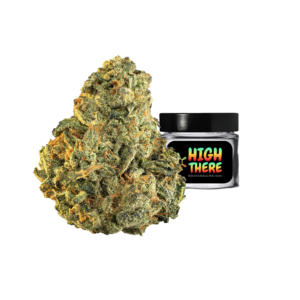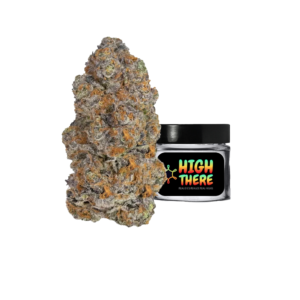Brief history of cannabis in cooking
Cooking with cannabis dates back centuries and is prevalent in many cultures worldwide. Historically, cannabis has been used for medicinal purposes and not necessarily for recreational use.
The earliest documented use of cannabis in cooking comes from ancient India. It was used in Ayurvedic medicine to treat various ailments. It is believed that cannabis was added to food to mask its bitter taste.
In the United States, cooking with cannabis has gained popularity. It is due to the legalization of marijuana in Washington, DC, and several other states. The trend has been fueled by the belief that ingesting marijuana is healthier than smoking it and that edibles provide a more controlled high.
Benefits of cooking with cannabis
Cooking with cannabis offers many benefits for those who consume it this way. One advantage is that it provides a more discreet way to consume marijuana than smoking or vaping. In addition, since edibles take longer to take effect and last longer than other forms of consumption, they can benefit those seeking long-lasting pain relief or relaxation.
Another benefit is that ingesting marijuana through food allows users more control over their dosage. They are important for medical users seeking precise amounts of THC or CBD for their condition. Cooking with cannabis allows users to enjoy all the health benefits associated with marijuana without exposing themselves to toxins found in smoke from burning plant material.
Getting Started with Cooking Cannabis
Choosing the right strain for your recipe: Finding the Perfect Match

When cooking with cannabis, choosing the right strain is essential to achieve the desired effects and flavor profile. Indica strains are known for their relaxing and body high and are better suited for baked goods such as wedding cake strains or biscotti strains. Sativa strains are more uplifting and energizing, which makes them ideal for dishes that require a little extra boost, like a stir fry or pasta dish.
Hybrids come in all shapes and sizes and can balance indica and sativa effects well. Depending on your goal, there’s a strain out there that will work best for your recipe.
Decarboxylation: why it’s important and how to do it?
Decarboxylation is essential when cooking with cannabis because it activates the THC in raw weed into its psychoactive form. Without decarboxylation, you won’t get high from eating cannabis-infused foods.
To decarboxylate your weed, preheat your oven to 240°F (115°C). Spread finely ground cannabis on a lined baking sheet in an even layer.
Bake for 30-40 minutes, stirring occasionally until lightly browned. Let cool before using in recipes.
Dosage: how much cannabis to use in your recipe?

However, this may vary based on personal tolerance levels and the strain’s potency. It’s best practice to start with a smaller amount and adjust as needed depending on the desired effects.
Delicious Recipes Using Cannabis
Appetizers: Cannabis-Infused Guacamole, Buffalo Wings, and Bruschetta
Regarding appetizers, cannabis-infused dishes can add a unique twist to any party or gathering. For something simple yet satisfying, try making cannabis-infused guacamole by mixing in some finely ground cannabis with your traditional guacamole recipe. This not only adds a delicious nutty flavor but also provides the added benefits of THC.
If you want something with a little more kick, try making cannabis-infused buffalo wings. Mix THC oil or butter into your wing sauce before tossing it with cooked chicken wings.
The result is a tangy and spicy dish that will satisfy and relax you. For a more sophisticated option, consider making cannabis-infused bruschetta.
Start by spreading a layer of cream cheese on toasted baguette slices. Top them with diced tomatoes, basil leaves, and finely chopped cannabis. The creamy cheese pairs perfectly with the fresh tomatoes, while the cannabis provides that extra kick.
Main Dishes: THC-Infused Pasta, Cannabis Butter Chicken, and Pot Roast
Cannabis can also add an elevated twist to traditional dishes such as pasta and chicken. Start by infusing your favourite pasta sauce with THC oil or butter for an easy yet delicious meal. You can also experiment with different strains to see which pair best with certain spices or ingredients.
For something heartier, try making cannabis butter chicken by simmering it in a creamy tomato-based sauce infused with THC butter or oil. The spices in the dish mask the taste of the cannabis while still providing all of its benefits.
Another great option is pot roast infused with finely chopped marijuana buds or ground-up trimmings from other recipes. Cook slowly over low heat, and the flavors of the cannabis will blend with the meat and vegetables for a savory dish perfect for a cozy night in.
Desserts: Marijuana Brownies, Weed Ice Cream strain, and Infused Chocolate Truffles
No cannabis-infused meal would be complete without dessert. For an easy option, try making marijuana brownies using your favourite recipe and adding some finely ground cannabis. The chocolatey goodness of brownies masks the taste of cannabis while providing all its benefits.
For something more unique, consider making weed ice cream strains by infusing heavy cream with THC oil or butter before freezing it. You can experiment with different flavors to create a one-of-a-kind frozen treat that is both delicious and relaxing.
For an elegant dessert option, make infused chocolate truffles by melting dark chocolate with THC oil or butter before rolling them into small balls. These decadent treats are perfect for dinner parties or indulging alone after a long day.
Tips for Cooking with Cannabis
Proper Storage of Infused Ingredients
Once you’ve taken the time to infuse your ingredients, it’s essential to store them properly. Cannabis-infused oils, butter, and other components should be stored in airtight, cool, dark containers.
Exposure to light and heat can break down the active compounds in cannabis, making your infused ingredients less potent. If you’re using fresh cannabis flowers in your recipes, it’s essential to properly dry and cure the buds before use.
Improperly dried cannabis can develop mounds or bacteria that can ruin your recipe or even make you sick. To dry your cannabis, hang the buds upside-down in a dark area with good airflow for about two weeks until fully dry.
How to Mask the Taste of Cannabis in Your Recipes?
One of the biggest challenges when cooking with cannabis is masking its intense flavor. While some people enjoy the earthy taste of marijuana in their food, others find it overwhelming. One effective way to hide the taste is by using solid flavors like garlic, spices, or citrus fruits.
Another option is to use premade cannabis tinctures or concentrates already infused with flavors like mint or vanilla. These products often taste more pleasant than traditional marijuana-infused oils and butters.
Avoiding Common Mistakes When Cooking with Marijuana
Cooking with marijuana is a science and an art form; many factors can affect how potent your final product will be. One common mistake when cooking with cannabis is not decarboxylating it first – this process activates the THC so that your body can absorb it.
Another mistake is overcooking your infused ingredients at high temperatures, which can cause some active compounds to break down and become less potent. Following recipes closely and monitoring cooking temps carefully is essential to ensure you get the desired effects from your cannabis-infused creations.
Final thoughts on cooking with cannabis
Cooking with cannabis is an exciting and delicious way to experiment in the kitchen. However, it’s important to remember that marijuana is still a controlled substance in many places, and cooking with it should be done responsibly.
Always understand dosage guidelines and use appropriate amounts in your recipes. Despite the potential legal implications, cooking with cannabis can be a great way to explore new flavors and get creative in the kitchen.
It can also be a fun activity to share with friends or family who are open-minded about marijuana use. Remember that there are no limits to what you can create when cooking with cannabis – whether savory dishes or sweet treats, this versatile herb can enhance any recipe.
Encouragement to experiment and have fun in the kitchen
If you’re intrigued by the idea of cooking with cannabis, don’t be afraid to try it! Start experimenting with small amounts of marijuana until you get comfortable with dosage guidelines and find your preferred strain for different types of recipes. Cooking with cannabis is all about having fun and exploring new flavors.
Some recipes might turn out differently than expected, but don’t let that discourage you from trying something new next time! There’s always room for improvement when experimenting in the kitchen.
So, grab some bud, fire up your oven or stove top, and start creating delicious meals infused with THC or CBD.
Cooking has never been more exciting!



